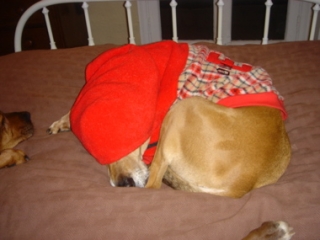Mining Dog Star Daily's Resources — Fear

Here at Dog Star Daily we are fortunate to have the contributions of many great minds. So I decided to take advantage of it on behalf of our readers. You may have noticed a lot of talk about fearfulness in our blogs recently. That is because this week I asked our resident bloggers for their insights and opinions on the topic of fearfulness in dogs. Some of them answered in blogs of their own, as in these pieces by Nicole Wilde, Gillian Ridgeway, and Drayton Michaels.
Others responded to me directly and here are the questions I posed:
Reinforcing Fear?
Is it wrong to offer a food reward or to pet to a dog that is displaying fear?
Is this just reassuring the dog or reinforcing the unwanted behavior?
What about the role of classical conditioning in treating fear?
How do you use it appropriately without worsening the situation?
Is there a right way and a wrong way to go about treating this problem?
What about coddling the dog? Especially small dogs that often get picked up when they react?
Is it fear or resource guarding (the person)?
And here are the direct responses:
Dr. Jon Klingborg
Let's say that you have one great fear and one great love in your life-- you are afraid of heights and you love Junior Mints. Given this, would you willingly sky dive if I offered to throw a Junior Mint in your mouth every minute of the descent?
How about a less extreme example: Most of us are anxious about speaking in front of large groups. Would you be more relaxed speaking in front of 500 people (that's 1000 eyes!) if you were rewarded with your favorite treat while at the podium? I didn't think so. . .
Treats may be an effective distraction for low-level fear, but when an animal's "fight or flight" instincts have kicked in, then eating isn't high on the agenda.
In many cases, owners "create" fear in their pets by reacting to non-harmful events. Owners who tense up every time anything happens (e.g. another dog or person walks by, a loud car drives quickly past) actually teach their dog that these events are something to fear.
In the pack setting, it is the top dog's job to react to the fear-inducing events and ignore the rest. Since owners are (supposed to be) the top dog, by reacting to loud noises, cars, dogs, etc., they are actually telling the dog to "fear this" and "fear that."
There are many reasons for fear in dogs, but a lot of them stem from the owner not having the dog's complete respect. I can't underscore enough how important basic obedience training is to create both a strong bond between the owner and dog as well as the need for respect.
Once your dog respects you, he will trust that you will do the right thing when something "scary" happens. This will create a much more secure and less fearful dog-- and that will make everyone happy!
Dr. Jennifer Messer
Classical and operant are always both occurring in any learning situation. However, classical usually overrides operant when the behavior is an emotional response (such as a fear response). Unless the dog seems to be playing a "fear card" (operantly behaving fearfully... so operating the environment by purposefully acting fearfully in order to score a food reward from the human) - which would be a pretty bizarre MO - it only makes sense to use a classical approach: follow fear-inducing stimuli with treat for classical effect, even if you accidentally go over threshold and see the fear response (because ideally you will try to stay under threshold, which makes the whole question moot, anyhow). Proof is in the pudding - if it is going to "reward the fear" the dog will get worse. I have yet to see that occur!
Go to our Training Textbook to see what Dr. Dunbar has to say about preventing fearfulness in your pup.
For more information read Nicole Wilde's Help For Your Fearful Dog




